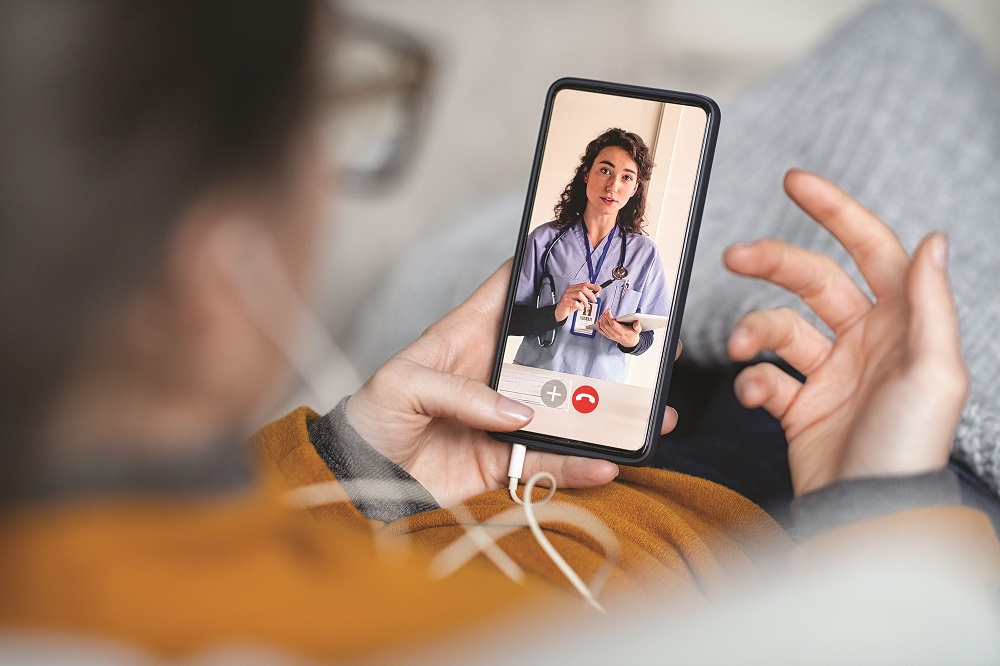The pandemic has spurred a new evolution of space and innovation within the healthcare industry, and integrators play a key role in shaping the patient experience through technology.
Many healthcare facilities are operating “digital front doors,” where patients can receive care when they need it. “Digital front doors are a new foundation for customer experiences in and out of the workplace,” Michelle Thomas, customer relations specialist at Louisville, Ky.-based integration firm Trinity Dynamics, says.
“Large corporations are adding designated rooms within places of business for the purpose of virtual-care services. This provides the now care, without waiting or the need for making an appointment days later,” Thomas adds.
At least 40% of patients expect to continue using telehealth going forward, according to research from McKinsey & Company. For that expectation to be met, healthcare providers must make telehealth appointments available to patients via high-quality videoconferencing systems. And those systems must be easy for both physicians and patients to use.
Telehealth/Telemedicine
“We have seen an adaptability and acceptance of telehealth services,” Thomas continues. “Now, it’s become a common practice.”
Brian Houdek, sales design consultant with Maryland Heights, Mo.-based Conference Technologies, Inc. (CTI), agrees. He notes that virtual doctor visits are becoming more and more prevalent. Clients are relying more on web-enabled and desktop-type conferencing applications than ever before.
Small huddle spaces or presentation rooms, which clients weren’t as concerned about pre-pandemic, must now all be video enabled. “The biggest challenge as we started looking at everybody’s initiatives of making video-enabled spaces was their back-to-work strategy,” Houdek says. He notes that, in many cases, stakeholders are trying to leverage legacy equipment to deliver new capabilities.
Related: Telehealth Booms During Pandemic, Expected To Remain
The challenge for integrators like Houdek is to enable these next-generation healthcare services without having to rip everything out and start from scratch. “It’s not just a bill of materials and [this is] what we’re looking to do,” he says. “It’s site visits; it’s looking at the current state; it’s looking at the equipment in these spaces.” He adds, “It’s having to go in and make sure all the firmware on the hardware is up to date.” Ultimately, it’s not as simple as just adding a camera to any space. “It’s creating an end-user experience that will bring all points together,” Houdek summarizes.
Network Security
At the start of the pandemic, many healthcare providers had to make decisions quickly. That meant they didn’t have the ability to vet new technologies in the manner that they normally would. Putting into words clients’ thought processes at the time, Houdek says, “What should we do? What can we use? What’s the best technology out there? What works best in our current ecosystem? What works best with our current workflow in our office?”
In normal times, healthcare clients would go through multiple iterations, embracing a robust testing process for new technologies. “The healthcare industry wants to dot their “I”s, cross their “T”s and mitigate any risks before they put it out there,” Houdek says. “It takes a lot of buy in [from healthcare clients because] they’re not making a decision for three spaces; [instead,] they’re usually making a decision for the whole hospital system. It’s not a small decision to make.”
“When they’re adopting any new technology, they want to eliminate an error rate,” Houdek explains. “They want to be able to mitigate risk. The only way to mitigate risk, and to understand if the technology is going to work, is to put it through a trial first.” He adds that, then, the client continues to use the technology and, finally, “…makes the decision on whether it’s a good fit for them.”
Given the emergency nature of the pandemic, healthcare clients faced time pressures that, sometimes, trumped security. “Security and compliance seem to have taken a back seat [to] necessity,” Trinity Dynamics’ Thomas remarks. “Our challenge as an AV provider is to ensure that security and compliance remain a top priority as telehealth technology accelerates. Through the right AV setups, we can set customers up for great success using the latest technologies.”
Connectivity & Access
Another caveat to consider, as telehealth comes to market, is access to the technology. Development, Thomas notes, is almost surpassing access. “Most everyone seems to have a smartphone — or access to one — but not everyone does,” she explains. There’s also the question of the devices’ capability level. Are they updated enough? Can they handle the latest updates?
“Then, there’s the question of connectivity,” Thomas continues. “Does everyone have the quality of connectivity within their home, whether rural or not, to connect over strong, secure connections? Rural health is, of course, the segment that faces the biggest hurdles when it comes to connectivity and access.”
Concluding, Thomas articulates a mission that the entire AV integration channel should have at its heart: “Overall,” she says, “we must find ways to support and build the infrastructure and equipment that can provide better access.” Because every person, regardless of where they live and irrespective of the corporate policies of their organization, should be empowered to benefit from telehealth and other revolutions in healthcare services.




